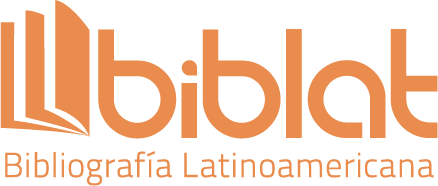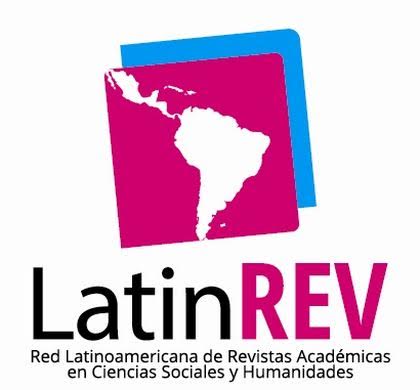Cambios tempranos en la competencia lingüística
Un estudio de caso de un niño hablante de español como lengua de herencia
DOI:
https://doi.org/10.32870/punto.v1i14.138Keywords:
Hablante de herencia, adquisición bilingüe, análisis de errores lingüísticosAbstract
El presente trabajo constituye el primer análisis de un estudio mayor y presenta un estudio de caso de un niño hablante del español como lengua de herencia y aprendiz del inglés como segunda lengua. Los objetivos del estudio son analizar si existe un cambio en la competencia lingüística durante los primeros años de educación escolar e identificar los tipos de errores gramaticales en ambas lenguas. Los datos se obtuvieron mediante una tarea de recuento de narrativa en cada lengua y fueron recopilados longitudinalmente durante los primeros cinco años de educación formal del niño -de prescolar a tercer grado- en una escuela pública en Estados Unidos en donde la educación se imparte totalmente en inglés. Los resultados muestran que la competencia lingüística en ambas lenguas refleja un crecimiento. Sin embargo, el crecimiento es más claro en el inglés que en el español, y mientras que la gramaticalidad en el inglés mejora, en el español va en decremento.
References
Anderson, R. (1999). Loss of gender agreement in L1 attrition : preliminary results Bilingual Research Journal, 23(4), 389–408 https://doi org/101080/15235882199910162742
Anderson, R. & Souto, S. (2005). The use of articles by monolingual Puerto Rican Spanish-speaking children with SLI. Applied Psycholinguistics, 26, 621-647
Argyri, E. & Sorace, A. (2007). Crosslinguistic influence and language dominance in older bilingual children Bilingualism: Language and Cognition, 10(1), 79
Beaudrie, S & Fairclough, M (2012) Spanish as a heritage language in the United States: The state of the field. Georgetown University Press.
Bedore, L, Peña, E, Summers, C, Boerger, K, Resendiz, M, Greene, K., Bohman, T. & Gillam, R. (2012). The measure matters: Language dominance profiles across measures in Spanish–English bilingual children Bilingualism: Language and Cognition, 15(3), 616 https:// doiorg/101017/S1366728912000090
Benmamoun, E., Montrul, S. & Polinsky, M. (2013a). Defining an “ideal” heritage speaker: theoretical and methodological challenges. Reply to peer commentaries Theoretical Linguistics, 39(3-4), 259-294 https:// doiorg/101515/tl-2013-0018
Benmamoun, E., Montrul, S. & Polinsky, M. (2013b). Heritage languages and their speakers: opportunities and challenges for linguistics. Theoretical Linguistics, 39(3–4), 129–181 https://doiorg/101515/tl2013-0009
Berman, R & Slobin, D (1986). Frog story procedures in coding manual: temporality in discourse. University of California at Berkeley, Institute of Human Development
Carreira, M. & Kagan, O. (2011). The Results of the National Heritage Language Survey: Implications for Teaching, Curriculum Design, and Professional Development Foreign Language Annals, 44(1), 40–64 https://doi.org/10.1111/j.1944-9720.2010.01118.x
Calero Hernández, E (2017) La discriminación lingüística de los hispanohablantes en Estados Unidos En Fernández, M, Prado E & Martínez, L (coords), Estudios sobre Derechos Humanos (pp 9-39) Omnia Mutantur SL
Castilla-Earls, A., Restrepo, M. A., Perez-Leroux, A., Gray, S., Holmes, P., Gail, D. & Chen, Z. (2016) Interactions between bilingual effects and language impairment: exploring grammatical markers in Spanish-speaking bilingual children. Applied Psycholinguistics, 37, 1147–1173
Castilla-Earls, A., Pérez-Leroux, A., Martinez-Nieto, L., Restrepo, M. A. & Barr, C. (2019). Vulnerability of clitics and articles to bilingual effects in typically developing Spanish–English bilingual children. Bilingualism: Language and Cognition, 23(4), 825-835 https://doi org/101017/s1366728919000610
Cuza, A. & Miller, L. (2015). The protracted acquisition of past tense aspectual values in child heritage Spanish. En Klassen, R., Liceras, J. & Valenzuela, E Hispanic linguistics at the crossroads: theoretical linguistics, language acquisition and language contact (pp 211-230) John Benjamins Publishing Company.
De Bot, K & Schrauf, R (2009) Language development over the lifespan Routledge https://doiorg/104324/9780203880937
Eichler, N., Jansen, V. & Müller, N. (2012). Gender acquisition in bilingual children: French-German, Italian-German, Spanish-German and Italian-French International Journal of Bilingualism, 17(5), 550–572 https://doiorg/101177/1367006911435719
Gharibi, K. & Boers, F. (2019). Influential factors in lexical richness of young heritage speakers’ family language: iranians in New Zealand. International Journal of Bilingualism, 23(2), 381-399
Gutiérrez-Clellen, V. & Hofstetter, R. (1994). Syntactic complexity in Spanish narratives : a artdevelopmental study Journal of Speech & Hearing Research, 37, 645-654
He, A. (2010). The heart of heritage: sociocultural dimensions of heritage language learning Annual Review of Applied Linguistics, 30(2010), 66–82 https://doiorg/101017/S0267190510000073
Hunt, K (1965) Grammatical structures written at three grade levels. Research report No. 3. Office of Education, Washington D. C., Cooperative Research Program, National Council of Teachers of English. https://files.eric.ed.gov/fulltext/ED113735.pdf
Jacobson, P. & Schwartz, R. (2005). English past tense use in bilingual children with language impairment. American Journal of Speech-Language Pathology, 14(4), 313–323 https://doi org/101044/1058-0360(2005/030)
Kupisch, T. & Rothman, J. (2016). Terminology matters! Why difference is not incompleteness and how early child bilinguals are heritage speakers. International Journal of Bilingualism, 22(5), 564-582 https://doiorg/101177/1367006916654355
Malvern, D, Richards, B, Chipere, N & Durán, P (2004) Lexical diversity and language development. Quantification and Assessment Palgrave Macmillan
Marinis, T. & Chondrogianni, V. (2010). Production of tense marking in successive bilingual children: when do they converge with their monolingual peers? International Journal of Speech-Language Pathology, 12(1), 19-28
Martinez-Nieto, L. & Restrepo, M. A. (2021) Grammatical gender in Spanish child heritage speakers: incomplete or different acquisition? Linguistics Approaches to Bilingualism https://doiorg/101075/ lab20042mar
Mayer, M (1967) A boy, a dog, and a frog, and a friend. Dial Press
Mayer, M (1973) Frog on his own. Dial Press
Meir, N., Walters, J. & Armon-Lotem, S. (2017). Bi-directional cross-linguistic influence in bilingual Russian-Hebrew children. Linguistic Approaches to Bilingualism, 7(5), 514–553 https://doiorg/101075/ lab15007mei
Meisel, J. (2007). On autonomous syntactic development in multiple first language acquisition. En H. Cault-Nulton, S. Kulatilake & I. Woo (Eds) BUCLD 31, Proceedings of the 31st annual Boston University conference on language development (pp 26-45) Cascadilla Press
Miller, J. & Iglesias, A. (2008). Systematic analysis of language transcripts (SALT). English & Spanish (version 12) [Computer Software]. Waisman Center, Language Analysis Laboratory.
Montrul, S (2004) Convergent outcomes in L2 acquisition and L1 loss En Köpke, B. & Schmid, M. (Eds.), First language attrition (pp 259280). John Benjamins Publishing Company.
Montrul, S (2008) Incomplete acquisition in bilingualism. Re-examining the age factor. John Benjamins B.V.
Montrul, S (2016) The Acquisition of heritage languages Cambridge University Press
Montrul, S. & Potowski, K. (2007). Command of gender agreement in school-age Spanish-English Bilingual Children International Journal of Bilingualism, 11(3), 301-328 https://doiorg/101177/13670069070 110030301
Morgan, G., Restrepo, M. & Auza, A. (2013). Comparison of Spanish morphology in monolingual and Spanish-English bilingual children with and without language impairment. Bilingualism, 16(3) 578-596 https://doiorg/101017/S1366728912000697
Paradis, J. & Grüter, T. (2014). Input and experience in bilingual development. John Benjamins Publishing Company. https://doi.org/10.1075/ tilar13
Pascual y Cabo, D. (2018). Examining the role of cross-generational attrition in the development of Spanish as a heritage language Evidence from gustar-like verbs. Linguistic Approaches to Bilingualism, 8(2), 1–24 https://doiorg/101075/lab15057pas
Pascual y Cabo, D. & Rotham, J. (2012). The (il)logical problem of heritage speaker bilingualism and incomplete acquisition. Applied Linguistics, 33(4), 450-455 https://doiorg/101093/applin/ams037
Pirvulescu, M., Pérez-Leroux, A., Roberge, Y., Strik, N. & Thomas, D. (2014). Bilingual effects: exploring object omission in pronominal languages Bilingualism, 17(3) https://doiorg/101017/ S1366728913000631
Polinsky, M. (2011). Reanalysis in adult heritage language: New evidence in support of attrition Studies in Second Language Acquisition, 33(2), 305–328 https://doiorg/101017/S027226311000077X
Restrepo, M. A., Gorin, J. & Gray, S. (2013). Screening Spanish-speaking children for language impairment: results from a scale development grant Inaugural Bilingual Research Conference, University of Houston. Houston, Texas.
Restrepo, M. A. & Gutiérrez-Clellen (2001). Article use in Spanish-speaking children with Specific Language Impairment.
Journal of Child Language, 28(2), 433-452 https://doiorg/101017/ S0305000901004706
Schmid, M. & Köpke, B. (2009). L1 attrition and the mental lexicon. En A. Pavlenko, The bilingual mental lexicon: interdisciplinary approaches (pp 209-238) Multilingual Matters
Semel, E, Wiig, E & Secord, W (2004) Clinical evaluation of language fundamentals— Preschool, 2nd Edition (CELF-Preschool-2). The Psychological Corporation
Silva-Corvalán, C (2014) La adquisición del español en niños de tercera generación Informes del Observatorio, 5(11) https://doi org/1015427/OR005-11/2014SP
US Census Bureau (2010) The hispanic population: 2010 https:// www.census.gov/newsroom/facts-for-features/2020/hispanic-heritage-month/mes-de-la-herencia-hispanahtml
Published
Versions
- 2022-02-24 (2)
- 2022-01-01 (1)
How to Cite
Issue
Section
License

This work is licensed under a Creative Commons Attribution-NonCommercial 4.0 International License.
Los autores/as que publiquen en esta revista aceptan las siguientes condiciones:
De acuerdo con la legislación de derechos de autor, Punto Cunorte reconoce y respeta el derecho moral de los autores, así como la titularidad del derecho patrimonial. Bajo la iniciativa de Budapest de acceso abierto, el autor otorga derechos conexos a la Universidad de Guadalajara, al Centro Universitario del Norte y a la revista Punto Cunorte para su difusión en acceso abierto. Punto Cunorte no realiza cargos a los autores por enviar y procesar artículos para su publicación.
Los autores/as pueden realizar otros acuerdos contractuales independientes y adicionales para la distribución no exclusiva de la versión del artículo publicado en Punto Cunorte (por ejemplo incluirlo en un repositorio institucional o publicarlo en un libro) siempre que indiquen claramente que el trabajo se publicó por primera vez en Punto Cunorte.
Esta obra está bajo una Licencia Creative Commons Atribución-NoComercial 4.0 Internacional.









